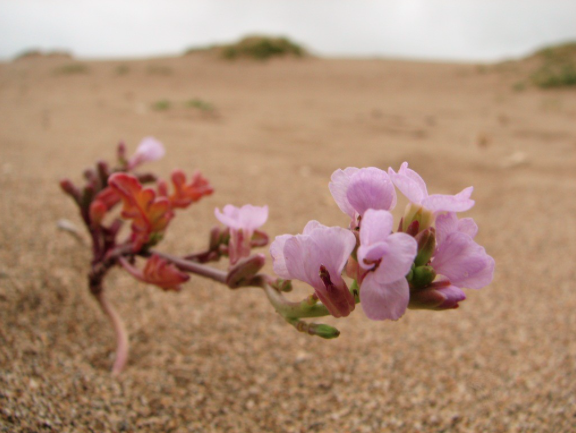Weed wars: survival of the fittest vs genetic ‘superspecies’?

In what may be good news for Australian biosecurity, when invading plant species mate with other plants, they do not always produce a new ‘superspecies’.
Hybridisation, where two species mate with each other and create fertile offspring, is known to lead to successful plant invasions.
But it is not just the formation of DNA into new species that makes hybridisation important. The history and sequence of invasions can also determine how a weed survives in its new environment.
Recent research, led by University of Melbourne Professor Roger Cousens along with collaborators from Canada and the United Kingdom, has provided novel insights for biosecurity policy makers.
“Hybridisation occurs when two or more plants from different species interbreed with each other. These hybrids may be just of curiosity interest, but they may be the difference between success and failure for an invading species,” Professor Cousens said.
“While many people think that hybridisation is important for invasive species because it leads to better, stronger species, that isn’t always the case.
One species may piggy-back on another for a while, forming hybrids when it first arrives, but then later taking over completely from the hybrids and the other species.”
In this study, the researchers looked at the American Sea Rocket (Cakile edentula) which arrived in Australia in the 1850s, first in Victoria and then spread quickly to the west, north and south. It was joined about 50 years later by the European Sea Rocket (C. maritima).
The two plants cross-pollinated but, instead of creating a permanent hybrid, the European plant took over, with only a few genes from the American plant left over to show for its existence in much of Australia.
It is similar to what happened to humans: we are the product of our ancestors mating with Neanderthals some 20 000 years ago, which we know from the presence of Neanderthal DNA in our genes.
“European Sea Rocket may have picked up genes from the American species, but it isn’t any more vigorous than it previously was. Its performance as a competitor hasn’t really been affected,” Professor Cousens said.
“Like Neanderthal humans, the American species has pretty much gone, though there is just a small portion left in southern Tasmania and northern NSW and Queensland,.
“Unlike Neanderthals, which we can only study long after the event, we are still able to study European Sea Rocket replacement as it happens.”
Professor Cousens said while biosecurity policy makers and researchers usually consider invading species as independent events, what happened with the sea rockets shows that the sequence in which they invade can be crucial.
“By doing computer modelling, we’ve shown that not only can hybridisation be really important, but it can be important in different ways than how people have guessed before," he said.
“Our conclusion is that if the European species had got here first, it could have had problems establishing itself. But because the American version was already here, the European species then had something to mate with and subsequently thrived.”
Intriguingly, this is only possible through the behaviour of pollinating insects, which prefer the larger flowers of the European species.
This ‘head start’ could be a reason why the European Sea Rocket dominated and has essentially obliterated the American Sea Rocket.
While both sea rockets are classified as invaders, that doesn’t mean they lack any redeeming qualities - the European Sea Rocket has many uses.
“The European Sea Rocket is a source of nectar for both native butterflies and exotic honey bees, native parrots eat the seeds and young shorebirds may use them to hide or for shelter. Although it wasn’t here originally, it competes with very few native plants. So there’s lots of positive and negatives aspects of the species.”